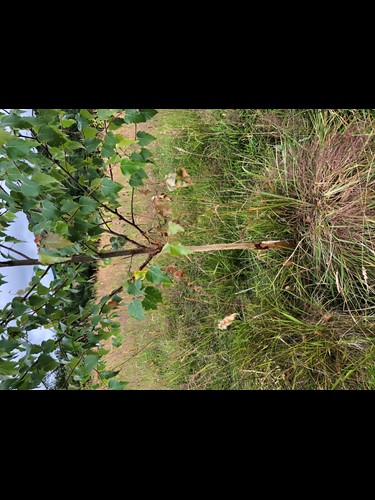Caring for your Trees

Tree Care Guide
If you have newly planted trees in a hedge, shelterbelt or woodland, now is a perfect time to give them a pre-winter health and maintenance check.
- Check your stock fencing is secure. Replace any broken fence posts or missing wire. Walk the perimeter regularly especially after storms to assess any damage from fallen branches. Remember to keep an eye on gates and ensure they can be shut securely, especially if used as a public right of way.
- Young saplings have less established roots and are therefore more prone to becoming destabilised by wet and windy weather. Check if any need replanting and make sure the soil is covering the root ball and is firmly in place. Exposed roots can kill trees in frosty or windy conditions.
- If your trees were planted with tree guards, have a look to see if they have become lose and are damaging the tree. Also see if the guards have become full of grass or weeds or are holding water. This can lead to trees rotting at the base, so remove the guards to clear them and then replace if needed.
- Check guards are not becoming too restrictive to the tree’s growth and consider if they need to be removed completely. This is normally once the trees are at least 1 foot above the top of the guard and in their second year of growth. This also depends on your circumstances regarding predation (see below). Please get in touch if you would like some advice.
What’s eating my trees? What can I do about it?

Regular tree checks can also reveal if your trees are being eaten by any animals. We often get sent photographs by landowners keen to discover what has been damaging their saplings, and if this will become a more serious issue.
Once you have discounted any livestock such as sheep or horses, the most likely candidates are:
- Caterpillars – This usually occurs in late summer and results in leaf damage on the tops of a few species such as birch or spindle. Most attacks will be minor, and the trees will recover once the caterpillars have moved on in their life cycle.
- Voles – these can damage young saplings especially in the early stages of growth. Look out for nibbling around the base of the trunk and saplings bitten in half. Guards can help while trees establish. Make sure guards are set firmly in the soil.
- Rabbits – similar damage to voles, but obviously are bigger so can nibble branches higher up. Look out for signs of a nearby warren. Guards may be needed to protect a hedge in the first few years. Rabbits usually want to stay need safety of the warren, so if planting a larger woodland, overplanting and tolerating losses in some areas is probably the best course of action.
- Hares – you might be lucky enough to live in an area with more hares than rabbits. These can stand up on their back legs and have bigger teeth, so the damage reflects this. Overplanting and accepting some losses of certain species is probably best. If you have persistent problems, taller guards might be necessary to protect trees such as Cherry or Birch. Please let us know if you need help and advice.
- Squirrels – these have been a huge problem for woodlands this year, most likely due to the warmer winter and an increase in numbers. They are mostly attacking older trees of at least 10-15 years old, so if you have woods this age it is worth having a look. Damage can be seen by ring barking on the trunks and dead or diseased branches above. Local management might be needed if damage becomes extensive.
- Deer – these are becoming more numerous in many areas where we are planting. Check for nibbled branches, often along a noticeable deer path, and droppings. Male deer may also rub and mark trees. Some damage may occur as deer move through your area and might not become an issue. If you see regular signs of damage, please get in touch. We can advise on taller deer guards or local management of the population.
Further advice on looking after your trees available from www.treecouncil.org.uk/guidance-resources/tree-care or if you've planted with us please don't hesitate to get in touch!